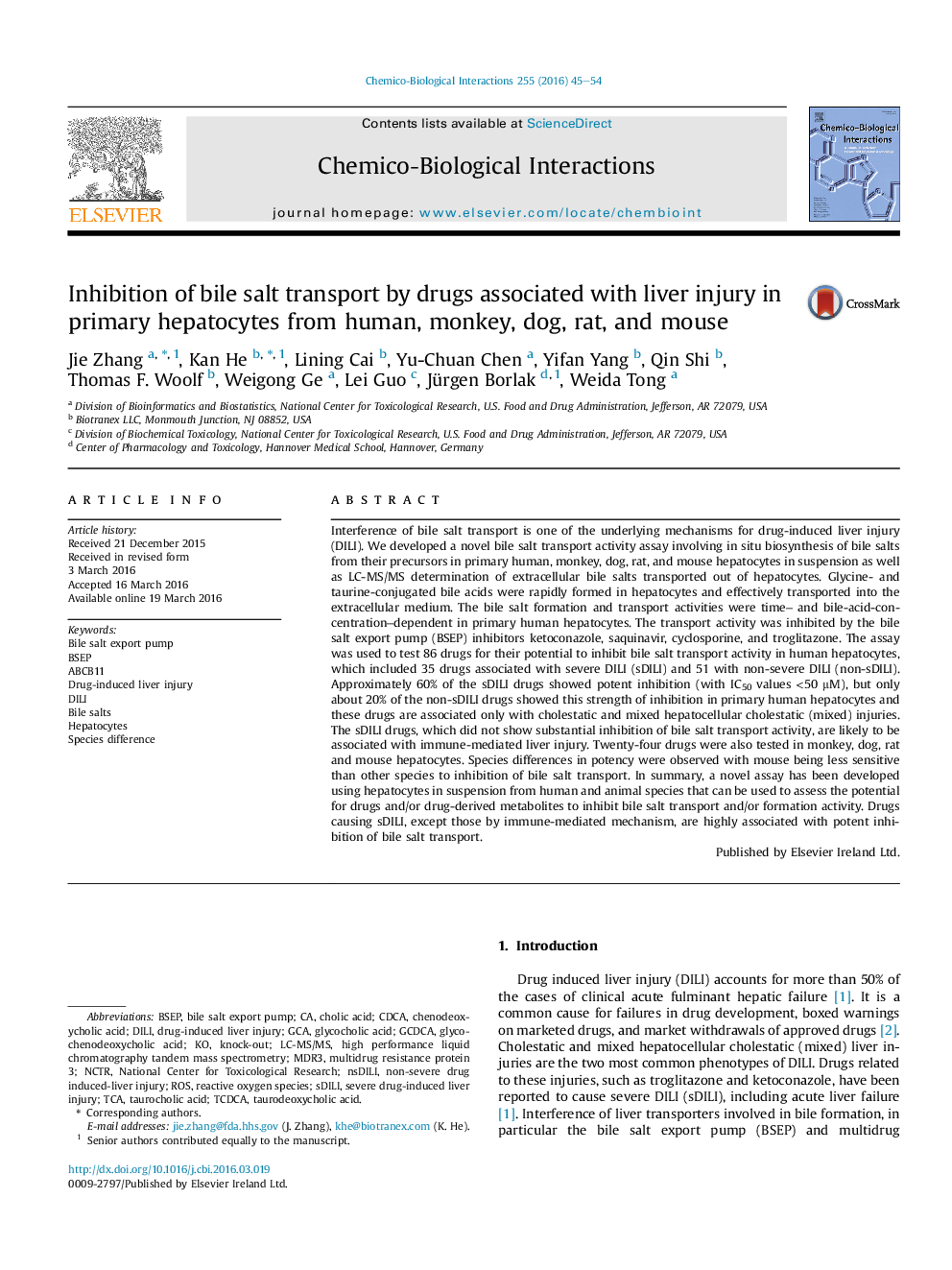| کد مقاله | کد نشریه | سال انتشار | مقاله انگلیسی | نسخه تمام متن |
|---|---|---|---|---|
| 2579913 | 1561586 | 2016 | 10 صفحه PDF | دانلود رایگان |

• In vitro assay developed for determining inhibition of the bile salt export using hepatocyte suspension.
• 86 drugs tested for their potential to inhibit bile salt transport activity in human hepatocytes.
• Inhibition of bile salt transport in human hepatocytes highly associated with DILI.
• Bile salt transport inhibition compared among species mouse, rat, dog, monkey and human.
Interference of bile salt transport is one of the underlying mechanisms for drug-induced liver injury (DILI). We developed a novel bile salt transport activity assay involving in situ biosynthesis of bile salts from their precursors in primary human, monkey, dog, rat, and mouse hepatocytes in suspension as well as LC-MS/MS determination of extracellular bile salts transported out of hepatocytes. Glycine- and taurine-conjugated bile acids were rapidly formed in hepatocytes and effectively transported into the extracellular medium. The bile salt formation and transport activities were time‒ and bile-acid-concentration‒dependent in primary human hepatocytes. The transport activity was inhibited by the bile salt export pump (BSEP) inhibitors ketoconazole, saquinavir, cyclosporine, and troglitazone. The assay was used to test 86 drugs for their potential to inhibit bile salt transport activity in human hepatocytes, which included 35 drugs associated with severe DILI (sDILI) and 51 with non-severe DILI (non-sDILI). Approximately 60% of the sDILI drugs showed potent inhibition (with IC50 values <50 μM), but only about 20% of the non-sDILI drugs showed this strength of inhibition in primary human hepatocytes and these drugs are associated only with cholestatic and mixed hepatocellular cholestatic (mixed) injuries. The sDILI drugs, which did not show substantial inhibition of bile salt transport activity, are likely to be associated with immune-mediated liver injury. Twenty-four drugs were also tested in monkey, dog, rat and mouse hepatocytes. Species differences in potency were observed with mouse being less sensitive than other species to inhibition of bile salt transport. In summary, a novel assay has been developed using hepatocytes in suspension from human and animal species that can be used to assess the potential for drugs and/or drug-derived metabolites to inhibit bile salt transport and/or formation activity. Drugs causing sDILI, except those by immune-mediated mechanism, are highly associated with potent inhibition of bile salt transport.
Journal: Chemico-Biological Interactions - Volume 255, 5 August 2016, Pages 45–54